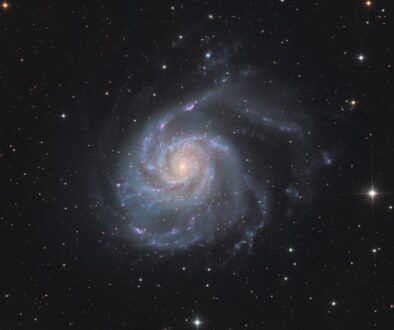Unveiling The Birth of Star Cluster Groups in The Milky Way
Above is a schematic illustration of a supernova-triggered star formation scenario. A sequential star formation event was subsequently triggered along the shell, where red stars represent an older stellar population and blue stars indicate younger generations formed later. Credit: XAO
A study published in Astronomy & Astrophysics has identified four previously unknown primordial open cluster (OC) groups in the Milky Way.
Open clusters, loose assemblies of stars born from the same giant molecular cloud (GMC), are typically considered to form in isolation. However, the newly discovered OC groups consist of multiple member clusters originating from the same GMC, formed through sequential star formation processes.
Notably, two of these groups, labeled G1 and G2, appear to have formed via a hierarchical mechanism triggered by multiple supernova (SN) explosions.
Using high-precision data from the Gaia satellite, researchers from the Xinjiang Astronomical Observatory (XAO) of the Chinese Academy of Sciences, in collaboration with the Shanghai Astronomical Observatory, Yunnan Observatories, and the University of Heidelberg, identified the OC groups by analyzing correlations in three-dimensional (3D) positions, velocities, and ages. G1 and G2 display distinct ring-like and arc-like morphologies, suggesting external compression events.
Based on these findings, the researchers adopted a triggered star formation framework to construct spatial correlation maps between cluster age and distance from potential SN explosion sites around the birthplace of OC groups. A clear age-distance correlation emerged, supporting a scenario in which multiple SN explosions, occurring over a short timespan, sequentially triggered the formation of G1 and G2.
(Source: phys.org)




